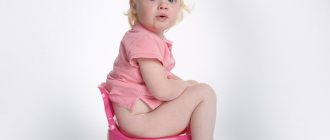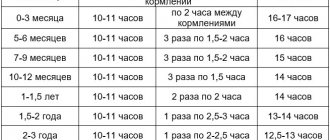Some exercises and massage techniques for asymmetry of muscle tone of the trunk and limbs
Home Favorites Random article Educational New additions Feedback FAQ⇐ PreviousPage 22 of 30Next ⇒
Careful observation of the baby allows us to note the slightest signs of asymmetry in muscle tone. If the child’s torso is more often curved in one direction, this is a cause for concern.
With asymmetry, the child’s body looks like an arc with a convexity towards less muscle tone. The legs and pelvis are turned in the direction of increased muscle tone, sometimes the shoulder girdle on this side is lower, and the head is often tilted in the same direction. Limb movements on the side of increased muscle tone may be either more or less pronounced than on the other side.
Special massage and therapeutic exercises are carried out against the background of general strengthening classes according to age complexes. The main task is to normalize the muscle tone of the child’s entire body, that is, to relax tense and strengthen weakened muscles.
On the side of increased muscle tone (concave side of the arc), relaxing massage techniques are used: stroking, light rubbing and gentle kneading, vibration, shaking.
2Ch.1
On the side of low tone, is performed :
stroking, more vigorous rubbing and kneading, stimulating pinching and percussive techniques.
You need to massage the child’s entire body (back, chest, stomach, arms and legs), following the principle described above.
Special exercises are necessarily interspersed and combined with relaxing massage techniques. Thus, vibration of the muscles of the torso and legs (from the side of increased tone) is accompanied by stretching of these muscles. This is done as follows: place the child on his stomach with his chubby side towards you, closer to the edge of the table. With both hands, grab the child from the side of the spastically contracted muscles and, pressing him to you, vibrate and stretch the torso and legs, as if encircling yourself with the child. In this case, the palms, fingers facing each other, lie flat on the side surface of the body. Producing simultaneously stretching and vibration, the palms move, one to the armpit, the other to the child’s leg and down it to the foot. The baby's head is between your forearm and shoulder and gently tilts in the opposite direction, the pelvis takes a position of slight hypercorrection (Fig. 204). In this position you can carry the baby in your arms.
Rice. 204. Hypercorrection position
In addition to this exercise, you should do more with the arm and leg that are tense, relaxing them. Shaking is widely used when moving the limbs.
Turning from back to stomach can also help equalize muscle tone if performed more often through the “concave” side. Hold the baby while turning for a few seconds, run your fingers along the spine (Fig. 205).
It is very important that the child lies in a strictly symmetrical position while sleeping in the crib and during walks. (Mentally draw a straight line: nose - chin - sternum - navel - pubis.) Styling will help maintain this position, the simplest version of which is two rolls of diapers or blankets located on the sides from the armpit to the child’s foot. To eliminate torticollis, which often occurs with asymmetry of muscle tone, a number of measures are recommended, described in a special chapter.
Rice. 205. Reflex back extension
2.M
Some exercises to help develop a sense of balance
Don’t be afraid to carry your baby in your arms in different positions: on your right and left arm, with your face and back to you. Change his position in the crib more often. The following exercises are effective for training the vestibular system .
• Rocking in the fetal position (see page 34)
• Swinging on the ball with your stomach and back down (see pages 34, 55)
• Rocking on your arms. Taking the baby in your arms facing you and supporting him under the back, rock the baby up and down (toward and away from you).
• Taking the child in your arms in a vertical or horizontal position, spin with him in both directions.
• Horizontal circling
Stand up and place the baby on your shoulder, belly down (Fig. 206). Start spinning, but do it carefully enough so as not to lose your balance. Change the direction of the circle - either clockwise or counterclockwise.
• And then spin the child around, holding him on his side (Fig. 207). Repeat the spinning motion, shifting the baby to the other side.
As you spin around with your baby, lift him into the air and spin around with him again. Before you finish, lower your child almost to the floor and lift him up again.
Start the exercise slowly and carefully. If for some reason your newborn doesn't like something, you're probably acting too quickly. Slow down with those.
Gradually increase the practice time from 10-15 seconds. for each exercise up to 30-40 seconds. Always stop before your child wants to.
• Rocking. Try rocking your baby up and down in a vertical position, lifting him into the air and lowering him with his legs onto your stomach. This will not only give him pleasure, but will also provide training for his supporting legs.
Lie on your back and rock your baby above you. Grab him tightly by the sides under your arms, lift him above you and look into each other's eyes. Tell him he is an airplane. Gently swing it left and right, lower it onto your chest and lift it again.
Rock your baby on your lap, placing him on one or the other.
Rice. 206. Spin on the shoulder
Rice. 207. Spin on your side 236
• Rolling like a log. With both hands, place the baby on his side, and then roll further, moving behind him. After this, roll him over to the other side and help him return to the starting position on his own.
When your child can roll on his own several times in a row, ask him to roll in both directions.
• Nudge. If the child is stable on all fours, lightly push him forward, backward, and to the sides. The exercise is carried out in the form of a game, encouraging the child to stay on all fours.
• Swinging with the baby in your arms, on a swing, in a hammock, on a carousel. Later, let the child swing on his own, you just need
insure him.
• Spinning by hands
With the child facing you, grab him by the wrists and spin him around on straight arms. Spin first in one direction, then in the other direction (Fig. 208).
Rice. 208. Spin by hands
• Acceleration
Turn the child towards you and take the iodine with your arms. Throw it low into the air and catch it. Typically, children really like this exercise; thanks to it, the child feels the force of gravity, especially at the moment when he falls into your arms.
• Shaking your head down. For the bravest parents! Grab the child firmly by the ankles and lift him up. It's better if he
will be facing you. Begin to swing it gently from side to side, like a pendulum. When you put the baby down. Be especially careful, take care of your neck.
Parents sometimes feel fear at the mere thought of holding their baby head down. However, this situation is well known to every newborn. In a normal pregnancy, the baby is turned upside down during the last month whenever the mother is standing or sitting. Therefore, be bolder, play more actively with your baby, change the position of his body in space more often.
THERAPEUTIC GYMNASTICS AND MASSAGE FOR CONGENITAL MUSCULAR TORTICOLISH
Congenital muscular torticollis is one of the most common diseases of newborns. The main cause is considered to be congenital underdevelopment of the sternocleidomastoid muscle, its injury during childbirth, as well as birth injury of the cervical spine.
The sternocleidomastoid muscle is paired, located on the lateral surface of the neck. When the right muscle contracts, the head tilts to the right and the face turns to the left; when contracting with the left, it’s the other way around. If both muscles contract simultaneously, the head tilts back and extends somewhat.
Thus, with unilateral muscular torticollis, the child’s head is tilted towards the affected muscle and turned in the opposite direction. With severe torticollis, asymmetry of the child’s face and skull is often found: the shoulder girdle, scapula and collarbone are located higher on the affected side. The affected muscle itself thickens, becomes denser and shortens, and sometimes swelling is detected in its lower part.
Treatment begins early, from 2-3 weeks of age, and necessarily includes positioning treatment, massage and therapeutic exercises.
Treatment by position
The child should lie on a semi-rigid mattress, preferably without a pillow. Instead of a pillow, a diaper folded several times is placed under the head. It is very important that light, toys, and communication with an adult be on the side of the torticollis (the affected muscle).
You can place the child in a corrective position using a ring wrapped in cloth and placed under the back of the head, as well as incomplete bags of sand (salt, cereal), which are placed on the bed on both sides of the head or on the side of the torticollis (above the shoulder girdle). The procedure is carried out 2-3 times a day while the child is sleeping (Fig. 209).
A prerequisite for positional treatment is the correct position of the entire torso: it must be symmetrical and straight in relation to the head. To do this, you can place bags or “rolls” of blankets from the child’s armpits to the knees.
At first, you should be close to the child and monitor his condition. Frequent regurgitation excludes the proposed placement.
The child should be placed on his side more often. If the child sleeps on the side of the torticollis, then a high pillow is placed under the head; if he lies on the healthy side, then the pillow is not used at all. It is very important to carry the baby correctly in your arms.
Rice. 209. Corrective position
1. Taking the baby in your arms in an upright position, press him with your chest towards you, your shoulders and the baby’s shoulders should be at the same level. Turn the baby's head to the painful side, fixing this position with your cheek (Fig. 210).
2. Taking the baby in your arms in an upright position with his back to you, use your cheek to turn his head to the painful side and slightly tilt it to the healthy side (Fig. 211).
3. Carry the baby on the “sick” side, facing or with his back to you. At this time, support his head, lifting it to the healthy side (Fig. 212).
Muscular torticollis can develop (and often occurs) in children with impaired muscle tone (asymmetry) or with a constant one-sided position in the crib. To avoid this, you need to frequently shift the baby and approach him from different sides.
Massage
From the very beginning of treatment, massage occupies a leading place and is carried out against the background of a general strengthening complex appropriate to the age and development of the child.
Rice. 210. Correctly carrying a child in your arms. Option I
Rice. 211. Proper carrying of a child in your arms. Option II
Rice. 212. Proper carrying of a child in your arms. Option III
Features of massage
When massaging your back, you should highlight the collar area: stroking and rubbing on the healthy side. On the sore side, relaxing techniques are used (stroking, vibration, gentle stretching) on the shoulder girdle and strengthening massage (rubbing, pinching, puncturing, effleurage) in the area of the shoulder blade.
When massaging the chest, relaxing techniques are used on the sore side in the upper chest. The lower part of the chest is massaged symmetrically.
Massage of the pectoralis-cleidomastoid muscle is carried out extremely carefully and carefully.
To relax the massaged muscle, the head should be tilted towards the torticollis. On the affected muscle, only relaxing techniques are used, gentle stroking (from the mastoid process to the collarbone), rubbing (done gently, with the pad of one finger), vibration (along the muscle). The child should not feel pain. The healthy sternocleidomastoid muscle is massaged more vigorously.
If there is asymmetry of the face, you can massage the cheek using stroking and rubbing on the healthy side, and stroking and vibration in a downward direction on the sore side.
Physiotherapy
Laying out on the side and reflex extension of the spine on the side (see Fig. 213).
Turns from back to stomach.
These exercises help raise the head in the healthy direction and turn it in the sick direction, i.e., correcting torticollis.
Laying on the side and turns are done in a ratio of 1:2, 1:3, i.e. more on the “healthy” side.
Swimming is very useful , especially on the “sick” side (Fig. 214):
Sample lesson for congenital torticollis with a child
aged 2 weeks to 3 months
1. General stroking massage of arms and legs.
2. Breast massage.
3. Stroking and vibration massage of the neck muscles on the side of the torticollis.
4. Massage the cheek muscles on the healthy side (stroking, rubbing, kneading).
Rice. 213. Extension of the spine on the side
Rice. 214. Swimming on your side
5. Corrective gymnastic exercises in turns through the diseased and healthy side (ratio 3:1).
6. Stroking massage of the sternocleidomastoid muscle on both sides.
7. Laying on the stomach.
8. General stroking back massage.
9. Reflex crawling.
10. Stroking massage of the back and neck.
11. Reflex extension of the back in the position on the right and left side.
12. Stroking abdominal massage.
13. Repeating special neck massage techniques.
14. Massage and reflex exercises for the feet.
15. Stroking massage of arms and legs.
During the day, you need to perform some neck massage techniques and special gymnastic exercises (5-10 minutes) 3-4 times.
⇐ Previous22Next ⇒
For inspection
The first features of muscle tone can be noted by visually assessing the baby’s posture at rest (for example, when he is sleeping) and the degree of work of individual muscle groups during movement. The doctor will definitely ask how the baby was born, since the method of birth (natural or CS) and the presentation of the baby (how it was located in the uterus) greatly influences its position in the first months after birth. If he was born in a breech position, his head may be tilted back due to the tone of the neck muscles. If he was born in a breech position, his legs will be straightened. In most babies, due to physiological tone, a characteristic fetal position is observed, which is well defined at rest or during sleep. The baby's arms are bent at all joints and brought to the chest, the palms are clenched into fists, and the thumb is covered with the rest, the legs are brought to the tummy, bent at the joints, the hips are slightly apart, and the feet are raised up. Due to hypertonicity, the range of movements produced by the baby is limited - he can quite actively move his legs, bend or straighten them, push them off from the adult’s hand or cross them. But the range of movements of the handles is less - they mainly move at chest level, bending at the elbows and wrists, rarely unclenching their fists. Due to hypertonicity of the neck muscles, the head is slightly thrown back.
Muscle tone largely depends on the physical condition of the child, his constitution and the characteristics of the nervous system. When crying, worrying or screaming, the tone naturally increases. In addition, in excitable babies it will also differ from calmer peers due to a greater range of movements.











